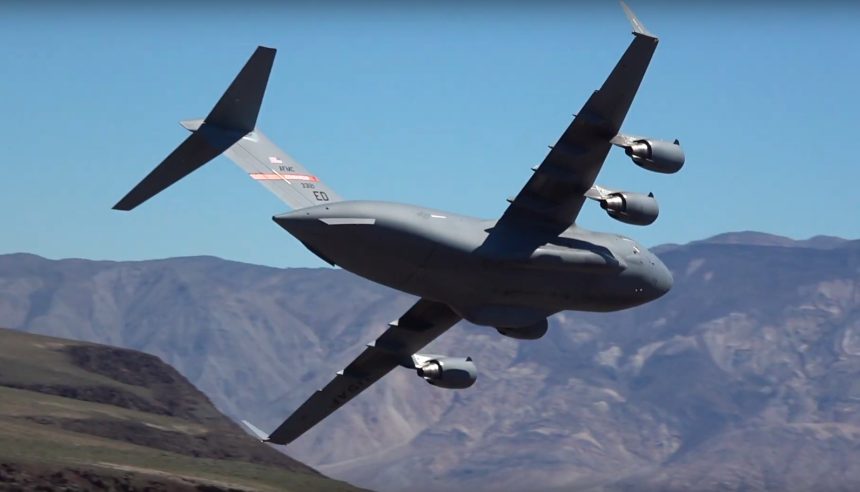It’s not the first time a C-17 flies in the “Jedi Transition” but it’s always a pleasure to see the airlifter maneuvering through the Canyon.
“Star Wars Canyon” (aka Rainbow Canyon) which empties into the Panamint Valley region of Death Valley National Park has become very popular among serious aviation photographers from all around the world who daily exploit the unique opportunity to shoot military aircraft during their low altitude transit through the so-called “Jedi Transition”.
While you may happen to see any kind of combat aircraft thundering through Canyon, fast jets (including warbirds) are, by far, the most common visitors to the low level corridor. However, if you are lucky enough, you can also have the chance to spot a heavy airlifters during low level training.
As happened at least twice in the last days when the C-17 Globemaster III 33121/ED belonging to the 418th Flight Test Sqn, 412th Test Wing from Edwards Air Force Base, performed some passes in the Start Wars Canyon.
The following video, taken by John Massaro, shows the pass on Apr. 18, 2019. As said it’s not the first time a C-17 cargo aircraft flies through the Jedi Transition, still it’s always interesting to see such a heavy aircraft maneuvering at low altitude through the valleys.
Here’s what I wrote about low level flying, commenting a cool shot of an F-35 flying the the Sidewinder low level route in California recently:
[…] what makes the low level training so interesting, is the fact that aircraft flying the low level routes are involved in realistic combat training. Indeed, although many current and future scenarios involve stand-off weapons or drops from high altitudes, fighter pilots still practice on an almost daily basis to infiltrate heavily defended targets and to evade from areas protected by sophisticated air defense networks as those employed in Iran, Syria or North Korea. While electronic countermeasures help, the ability to get bombs on target and live to fight another day may also depend on the skills learnt at treetop altitude.
To be able to fly at less than 2,000 feet can be useful during stateside training too, when weather conditions are such to require a low level leg to keep visual contact with the ground and VMC (Visual Meteorological Conditions). Aircraft involved in special operations, reconnaissance, Search And Rescue, troops or humanitarian airdrops in trouble spots around the world may have to fly at low altitudes.
That’s why low level corridors like the Sidewinder and the LFA-7 aka “Mach Loop” in the UK are so frequently used to train fighter jet, airlifter and helicopter pilots.
And such training pays off when needed. As happened, in Libya, in 2011, when RAF C-130s were tasked to rescue oil workers that were trapped in the desert. The airlifter took off from Malta and flew over the Mediteranean, called Tripoli air traffic control, explained who they were and what they were up to, they got no reply from the controllers, therefore continued at low level once over the desert and in hostile airspace.









